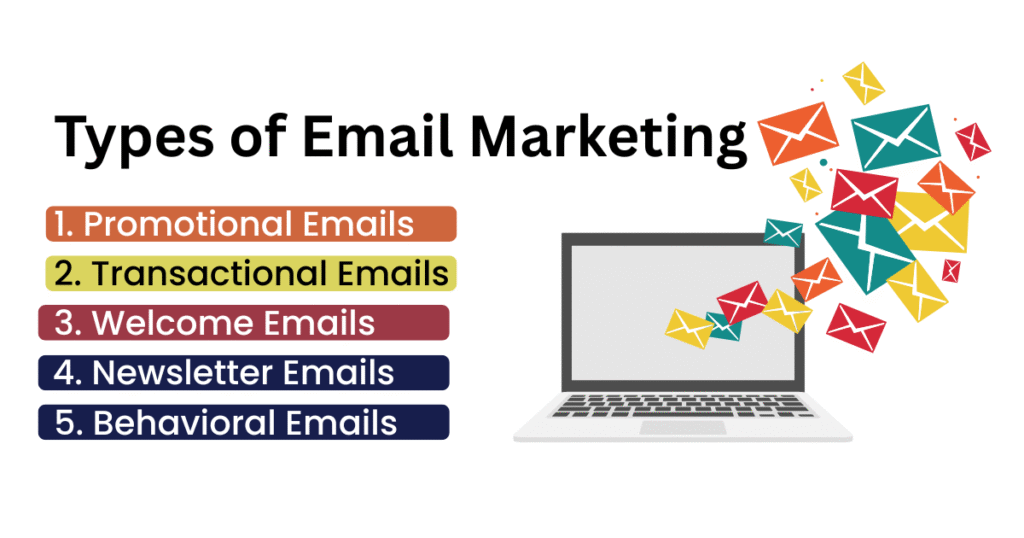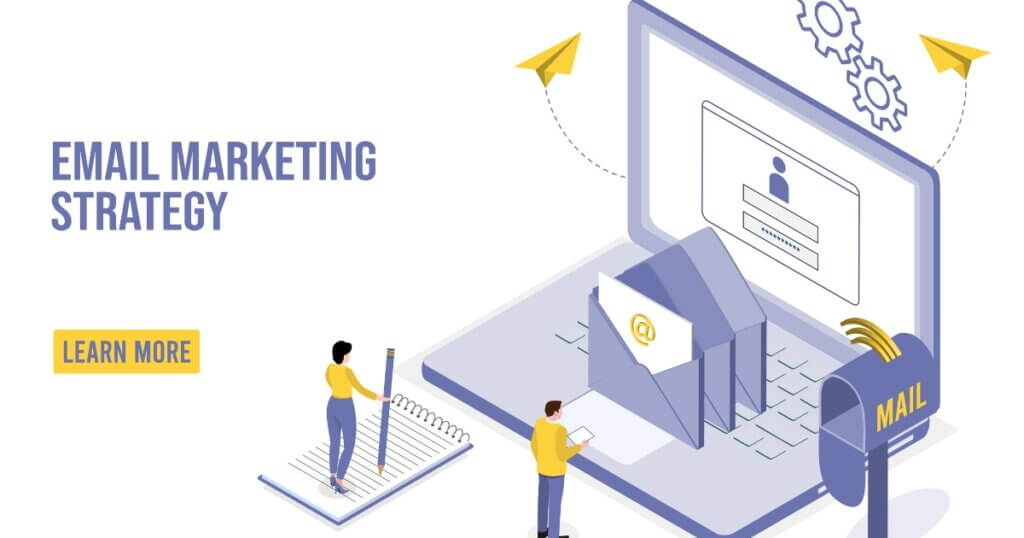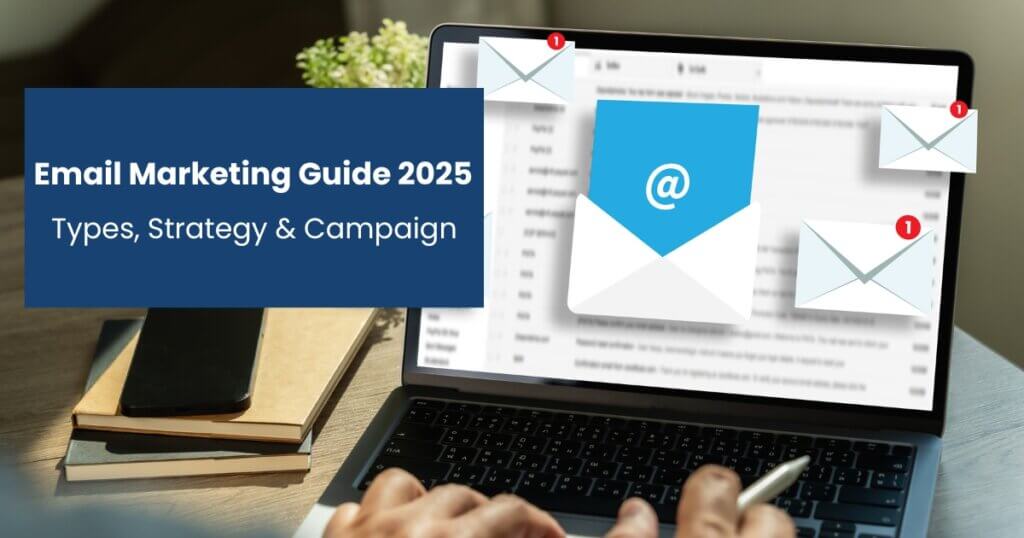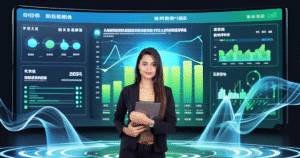Email marketing has become one of the most powerful tools in digital marketing today. In this complete Email Marketing Guide 2025, we cover everything you need to know. Studies show that over 4.5 billion people worldwide actively use email, making it one of the most effective ways to reach audiences directly. According to Litmus, email marketing delivers an average ROI of $42 for every $1 spent, outperforming nearly every other marketing channel.
Because of rapid growth in AI, automation, and segmentation, email marketing platforms in 2025 are smarter than ever. Businesses of all sizes can now automate entire sales funnels, send hyper-personalized content, and drive conversions with much greater efficiency. Therefore, choosing the right email marketing strategy is no longer optional, it’s absolutely essential.
At Originate Marketing, we’ve worked with over 570 businesses from solopreneurs to enterprise-level brands helping them build, launch, and scale their email marketing systems. From cold outreach to nurturing sequences, we’ve tested nearly every major platform and tactic hands-on.
This guide reflects real-world experience, not just textbook theory.
What is Email Marketing?
Simply put, email marketing is a digital marketing strategy where businesses send targeted messages directly to a subscriber’s inbox. These emails may serve multiple purposes: nurturing leads, promoting offers, onboarding new customers, or simply building relationships.
Unlike social media, where algorithms limit reach, email marketing gives you direct access to your audience. Additionally, platforms allow for automation, segmentation, and real-time analytics, making it easier to improve performance over time.
At Originate Marketing, one of our clients, a small fashion eCommerce brand, grew from 500 subscribers to 12,000 within 8 months using simple automated welcome series, abandoned cart emails, and seasonal promotions. Their sales rose by 31% simply by optimizing their email funnel.
Key Benefits of Email Marketing
-
Direct communication with your audience
-
Fully measurable with detailed analytics
-
Outstanding ROI compared to paid ads
-
Personalized messaging across customer segments
-
Highly scalable with automation tools
-
Builds long-term customer relationships
Types of Email Marketing
Before developing your strategy, it’s important to understand the various types of email marketing you can leverage at different customer journey stages.

1. Promotional Emails
Used to drive immediate sales, promote offers, or announce product launches. For example, Flash sales, Holiday promotions, New product launches.
One tip for promotion emails is always add a clear CTA (Call-to-Action) that drives users directly to your sales page.
2. Transactional Emails
Triggered automatically after a user action such as purchases or account creation. For example, Order confirmations, Shipping updates, Password resets.
Real Example for transactional emails is amazon’s transactional emails with shipment tracking are an excellent model for maximizing post-purchase engagement.
3. Welcome Emails
The first email interaction after someone joins your list, critical for setting expectations and building rapport. For examples, Welcome series introducing your brand, Subscriber-exclusive offers, Next steps for onboarding.
One tips for welcome emails is Brands that use welcome sequences see 82% higher engagement in follow-up campaigns.
4. Newsletter Emails
Ongoing updates that keep your audience engaged over time. For Examples, Monthly company news, Industry insights, Educational Blog summaries
One suggestion for newsletter emails is that use storytelling inside newsletters to strengthen emotional connection.
5. Behavioral Emails
Triggered by user behavior, allowing highly personalized communication. For examples, Abandoned cart reminders, Re-engagement offers, Upsells or cross-sells.
One real example for behavioral email is that One of our SaaS clients recovered 28% of abandoned checkouts simply by adding behavior-based follow-up emails.
Building Your Email Marketing Strategy

Creating a successful email marketing system requires clear planning and proper execution. Clear goals drive clearer messaging, which ultimately improves campaign performance. Let’s break it down step-by-step:
1. Define Your Goals
Start by identifying what you’re trying to achieve:
-
Increase sales?
-
Build your brand authority?
-
Generate leads?
-
Improve customer loyalty?
2. Build a Quality Email List
Avoid shortcuts like buying email lists; focus instead on organic growth. A B2B coaching business gained 1,200+ leads through a simple webinar lead magnet tied to their email list.
Effective methods:
-
Lead magnets (ebooks, checklists, webinars)
-
Website opt-in forms
-
Exclusive offers
-
Social media promotions
3. Choose the Right Email Marketing Platform
Different businesses require different tools. Here’s a quick cheat sheet:
-
MailerLite: Beginner-friendly
-
ActiveCampaign: Advanced automation
-
Instantly: Cold outreach (B2B)
-
ConvertKit: Best for content creators
-
Brevo: Budget-friendly SMB option
-
Moosend: Affordable automation
-
GetResponse: All-in-one solution
-
Benchmark Email: Lightweight and easy
-
Sender.net: Generous free plan
-
AWeber: Great for small businesses
Explore full comparison: Top 10 Email Marketing Tools 2025 – Full Guide
4. Segment Your Audience
Segmentation allows you to send more relevant content to specific groups. Segmented email campaigns result in up to 760% higher revenue, according to Campaign Monitor.
Popular segments:
-
First-time subscribers
-
Loyal customers
-
High spenders
-
Inactive users
-
Geographic targeting
5. Create High-Value Content
Content quality is what makes or breaks your email marketing. Use “customer success stories” to drive social proof and trust.
Content ideas:
-
Industry tips and insights
-
Client case studies
-
Product tutorials
-
Special discounts
6. Automate Your Campaigns
Automation reduces manual work and improves consistency. Platforms like ActiveCampaign or GetResponse offer powerful multi-step automations.
Automation examples:
-
Welcome series
-
Abandoned cart recovery
-
Post-purchase follow-up
-
Lead nurturing sequences
7. Monitor, Measure & Optimize
Constant optimization is key to long-term growth. After A/B testing subject lines, one of our SaaS clients increased open rates by 22% simply by tweaking personalization.
Metrics to track:
-
Open rate
-
Click-through rate (CTR)
-
Unsubscribe rate
-
Conversion rate
-
Revenue per email
Common Email Marketing Campaign Types
1. Lead Nurturing Campaigns
Turn cold or inactive leads into warm prospects by sending educational content, helpful resources, and soft promotional offers. Build trust, address pain points, and guide prospects toward purchase.
Example:
-
A 5-email series for SaaS prospects:
1️⃣ Intro guide → 2️⃣ Case study → 3️⃣ Free resource → 4️⃣ Customer testimonial → 5️⃣ Demo invite.
2. Cold Outreach Campaigns
Strategic, personalized emails aimed at B2B leads, partnerships, or collaborations. Focused on initiating conversations, building trust, and securing meetings.
Example:
-
A cold email to agency owners:
“Hi [Name], we’ve helped agencies like [X] increase booked appointments by 40%. Quick call to explore if we can help?”
3. eCommerce Campaigns
Maximize online store revenue via promotions, abandoned cart recovery, upsells, and personalized product offers.
Example:
-
Cart abandonment flow:
“Oops, you left something in your cart! Complete your order today and enjoy 10% off.”
4. Customer Retention Campaigns
Engage existing customers with loyalty perks, updates, and ongoing value to drive repeat business and reduce churn.
Example:
-
Monthly VIP email:
“Exclusive early access to our new collection — available only to loyal members like you.”
Compliance & Best Practices (2025 Edition)
1. Follow GDPR and CAN-SPAM
In today’s data-driven world, respecting privacy isn’t optional — it’s essential. These regulations are designed to protect users and build long-term trust.
-
Always secure consent:
Before sending any marketing email, make sure every recipient has willingly opted in. For instance, use website sign-up forms, lead magnets, or webinar registrations where consent is clearly given.Example:
Join our newsletter and receive weekly business growth tips, 100% free! -
Provide easy unsubscribe options:
It should be just as easy to leave your list as it was to join. Include a visible ‘Unsubscribe’ link at the bottom of every email.Example:
If you no longer wish to receive updates, click here to unsubscribe. -
Avoid deceptive subject lines:
Honesty is key. Misleading headlines not only break regulations but also harm your sender reputation.Good Example:
5 Simple Tips to Improve Your Cold Outreach
Bad Example:
Your Account Is Suspended Act Now! (if irrelevant)
2. Optimize for Mobile Devices
Since a large percentage of email opens happen on mobile, designing mobile-friendly campaigns is no longer optional — it’s a necessity.
-
Responsive templates:
Your emails should automatically adjust to fit any screen size whether it’s a smartphone, tablet, or desktop. This ensures your message is clear and visually appealing everywhere.Example:
Use email builders (like MailerLite, Brevo, or ActiveCampaign) that offer mobile preview and responsive design features. -
Short, compelling subject lines:
Since mobile screens cut off longer subject lines, aim for fewer than 50 characters. Be clear, catchy, and straight to the point.Example:
New Offer: 20% Off This Week
Hurry! Exclusive Limited-Time Flash Sale That You Can’t Miss Out On! -
Large, clickable CTAs (Call-to-Actions):
Ensure your CTA buttons are wide, easy to tap, and highly visible even on small screens.Example CTA Button:
Book Your Free Consultation
3. Maintain Strong List Hygiene
A healthy email list leads to better deliverability, higher engagement, and stronger sender reputation over time.
-
Regularly clean inactive contacts:
Don’t keep people who haven’t interacted in months. Consider sending re-engagement campaigns before removing them.Example:
We miss you! Still want to hear from us? Click to stay subscribed. -
Monitor bounce rates:
A high bounce rate may indicate poor list quality or outdated emails. Keeping bounce rates below 2% is ideal for most businesses.Example:
After every campaign, review your email platform’s bounce report and immediately suppress invalid addresses. -
Use double opt-in for better list quality:
Adding an extra confirmation step helps ensure only genuine, interested subscribers join your list — improving long-term engagement.Example:
After signing up:
Please confirm your subscription, we’ve just sent a quick verification email.
Solutions: Choosing the Best Email Marketing Platform
- MailerLite: Perfect for beginners and small teams
- ActiveCampaign: Ideal for advanced automation users
- Instantly: Tailored for B2B outreach
- ConvertKit: Made for creators and coaches
- Brevo: Great for SMBs
- Moosend: Budget-friendly automation
- GetResponse: Robust all-in-one marketing suite
- Benchmark Email: Simple, fast, and lightweight
- Sender.net: Best free plan in its class
- AWeber: Excellent for small business owners
Full breakdown here: Top 10 Email Marketing Tools 2025
Final Thoughts
Ultimately, email marketing remains one of the highest ROI digital marketing strategies available today. However, success doesn’t come from software alone. Instead, it comes from consistency, testing, and adapting based on real-time feedback.
If you want to build a scalable, revenue-generating email system, Originate Marketing can help you design automated workflows, content calendars, and campaign strategies tailored to your business.
Let’s build your email marketing success, contact Originate Marketing today.





Leave a Comment